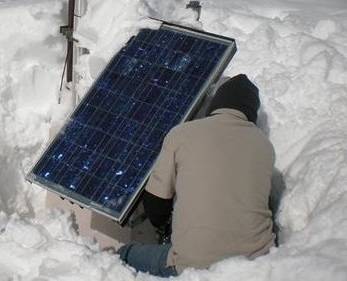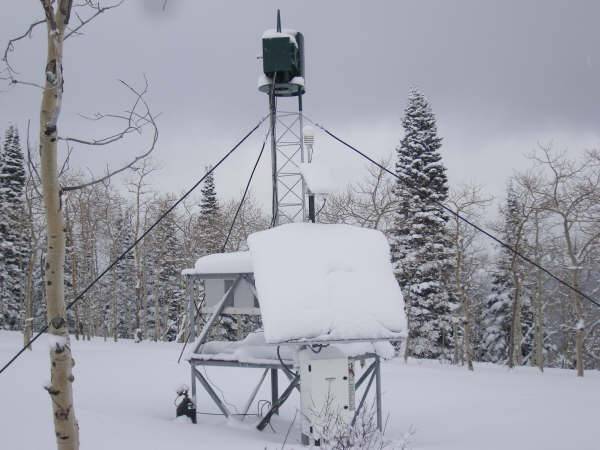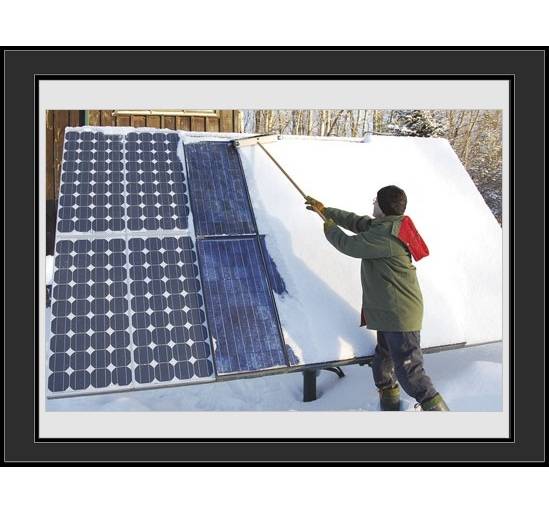Battery Temperature Compensation
The following is a discussion on battery temperature and the effects of warm and cold weather on battery charging setpoints. If your batteries are exposed to warm or cold weather, it’s important that your battery charger has temperature compensation in order to maximize the life of the batteries by assuring that they’re receiving the proper recharge setpoints in all weather conditions.
What is Battery Temperature Compensation and Why is it Needed
The chemistry in lead-acid batteries causes energy to flow more easily in warm temperatures and less easily in cold temperatures. This affects how much energy a battery can absorb during the recharge process. Most charger voltage setpoints are set for room temperature, 25°C [77°F], so if that setpoint is not adjusted for temperature then the battery might get overcharged and gas when it’s too warm, or undercharge and sulfate when it’s too cold. The end result of either scenario is a battery with a shortened lifespan, sometimes significantly if exposed to extreme conditions.
By adjusting the charge voltages for temperature, the battery can be properly charged in warm and cold weather year round. Some chargers have an internal temperature sensor and some have remote temperature sensors. If the battery charger is in the same enclosure with the batteries and the internal temperature is about the same than an internal sensor is fine. If the charger and batteries are in separate enclosures, then a remote temperature sensor would be more appropriate.
Some chargers have a fixed temperature compensation voltage (e.g. -5mV/°C/cell) and others might have an adjustable setpoint. An adjustable setpoint might be advantageous as different battery manufactures might recommend different temperature compensation values. (e.g. Deka battery recommends -3mV/°C/cell, Concorde recommends -4mV/°C/cell, Crown recommends -3mV/°C/cell, and Rolls recommends -4mV/°C/cell)
How to Calculate the Charge Voltage with Temperature Compensation
In order to find your new temperature corrected charge voltage you need to know 4 things:
1. your nominal system voltage
2. your charge voltage at 25°C [77°C]
3. your temperature compensation value
4. the temperature
Example 1: let’s use a 24V system, with a charge voltage of 28.6V, a temperature compensation value of -5mV/°C/cell, and a battery temperature of 40°C.
From the system voltage, there are 12 battery cells (24V / 2V per cell).
-0.005V/°C/cell x 12 cells = -0.06V/°C. The temperature compensation value is from 25°C, so 40°C-25°C = 15°C x -0.06V/°C = -0.9V + 28.6V = 27.7V. So the battery charge voltage at 40°C would be 27.7V.
Example 2: let’s use a 12V system, with a charge voltage of 14.1V, a temperature compensation value of -3mV/°C/cell, and a battery temperature of 5°C.
From the system voltage, there are 6 battery cells (12V / 2V per cell).
-0.003V/°C/cell x 6 cells = -0.018V/°C. The temperature compensation value is from 25°C, so 5°C-25°C = -20°C x -0.018V/°C = 0.36V + 14.1V = 14.46V. So the battery charge voltage at 5°C would be ~14.4V.

Don’t leave your batteries out in the cold without battery charging temperature compensation!

Wondering What Battery to Choose?
Start by visiting our VRLA batteries page to see information on the brands we carry, including MK-DEKA, Rolls, Concorde, UPG, Outback Power, and more!
Wondering about the differences between the different types of VRLA batteries, AGM vs GEL? Head over to our Gel vs AGM Tech Notes Page!


